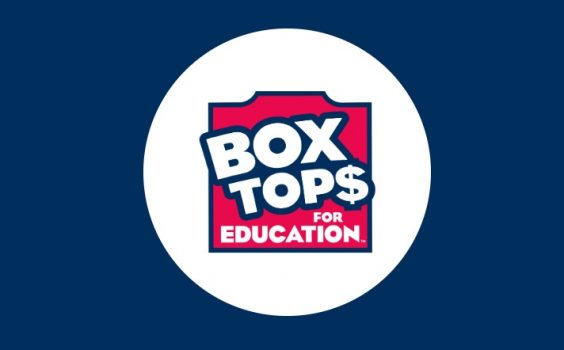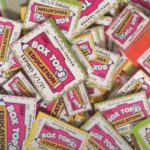
Another school year is coming to an end, with the hopes that most schools across the country will be able to return to normal, full in-person learning by the time classes are back in session in the fall. But one thing that’s far from normal, is earnings from the Box Tops For Education program.
The General Mills-run program, which provides money for schools when participants buy promoted products, has marked the end of the 2020-21 school year with a dismal new earnings low. About six years ago, schools participating in the Box Tops program earned a total of $78 million to help pay for additional items their budgets ordinarily didn’t cover, like new computers, books or playground equipment. This school year, program participants have earned a paltry $3,842,286.60 – only about 5% as much as during the program’s heyday, and on par with earnings in the early years of the 25-year-old program, when there were far fewer participants.
General Mills says some 70,000 schools across the country currently participate in the program, which means each school has earned an average of $54.89 this school year. That won’t buy anyone very many computers, books or playground equipment.
The sharp decline in earnings comes at the end of the first full school year after the program went fully digital. In the summer of 2019, General Mills began phasing out physical Box Tops imprinted on packages that participants would cut out, deliver to schools and mail in for 10 cents per clip. In its place was a new receipt-scanning app, which automatically gives you credit for buying qualifying products – no clipping, sorting or mailing Box Tops.
If it sounds like an improvement, that’s the way General Mills is pitching it. But the dollar figures tell the tale. Redemptions of existing paper Box Tops still accounted for much of the $22 million earned last school year, which itself was a sharp decline from previous years’ earnings. This school year, most, if not all, of the old paper Box Tops have expired. So the mere $3.8 million earned this year seems to show just how much program participants preferred doing it the old way.
“Go back to clipping. As a coordinator it was a lot of work, but I knew what we were getting. Most of the time the app is not working,” one frustrated program participant wrote on the Box Tops Facebook page. “This app is literally the worst. I try every week, and it’s so difficult I give up,” another wrote. “I used to be the Box Tops coordinator for our school and would make the whole program fun for the kids and families. It makes me so sad to see such a wonderful program get ruined,” a third commenter added. “Too bad, it was a fun cool program for the kids to bring Box Tops to school,” another participant lamented.
Many of the complaints have to do with getting the app to work correctly, remembering to use it at all, older folks not being inclined to download it, and the loss of the ritualistic, tactile experience of clipping out and collecting Box Tops that kids, families, friends and community members could do together.
There’s also the issue of collecting your data. Clipped Box Tops were anonymous. Your scanned receipts aren’t.
“We do not sell your purchasing information on the receipt you scan to us, nor do we sell your name, email address, school information, etc.,” the Box Tops program reassures participants. But that’s small comfort, since the program does collect your “purchasing information and behavior” for its own use. So General Mills will know everything you bought in a particular shopping trip, and can track your purchases over time to see what you’re buying, what you’ve stopped buying, and how it might entice you to buy it again with targeted advertisements or promotions to your device or your social media accounts associated with the email address you used to sign up for the Box Tops app.
“You have no business knowing what else I have purchased,” one frustrated Facebook commenter wrote. “Clipping was so much more fun for everyone, but that way you did not get all your data,” another wrote. “I bet most schools earn far less than now with scanning receipts.”
Indeed they have. This was certainly an unusual school year – as many students continued learning remotely and our regular grocery shopping habits were thrown for a loop, scanning receipts for Box Tops wasn’t exactly top of mind for many. And General Mills figured there would be a learning curve anyway, as it transitioned away from physical clips. But schools that have come to rely on the extra funding source are now having to learn to do without.
“I work in a public school, and the reduction in money they’ve gotten this year as a result in the change from physical Box Tops to the app was staggering,” one commenter wrote. “Most schools are complaining about how much they have lost since the change,” another added. “Our participation has plummeted greatly! It is so sad because this was a great way for so many people to participate in helping the school,” a third commenter wrote.
Another commenter was more forceful in denouncing the app-based program: “Now, you force children to pay for radiating mind-numbing devices from multiconglomerants, instead of using hand-eye coordination to cut out tangible items for school pride and privileges, especially in impoverished neighborhoods!!!??? This is absurd!!!”
Bottom line, the Box Tops program is not a charitable endeavor, and General Mills doesn’t claim that it is. In its latest annual Global Responsibility Report, the company says it “gave $92 million to charitable causes in fiscal 2020,” including “grants, corporate contributions and food donations.” But Box Tops payouts are treated not as a donation, but as a corporate business expense, which lowers the company’s gross profit and therefore its tax liability.
So the total Box Tops payout of $78 million a few years ago was a lot of money to spend for a lower tax bill. This year’s $3.8 million payout is an absolute bargain – a small, tax-free price to pay for data about your purchasing habits that General Mills can use to sell you more of its products. If the company can sell more than $3.8 million worth of additional products, the new app-based program could even help turn the Box Tops program into a profit center.
Sadly, there’s just not much profit it in for schools anymore. If your school managed to earn anywhere near the average of $54.89 this past school year – well, it’s better than nothing. Just don’t spend it all in one place.
















You realize that a charitable contribution is also a deductible expense. – but public schools are not charities – so that is why it’s a business expense. And there is no change to tax liability whether it was charitable or business expense. Why would they pay $1 to get back 21 cents. Your tax comment makes absolutely no sense.
Donations to public schools can indeed be considered deductible charitable contributions. But if they’re counted as a business expense, they’re above-the-line deductions, so they usually get a more favorable tax treatment than below-the-line charitable deductions.